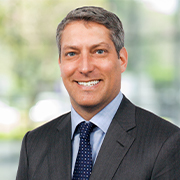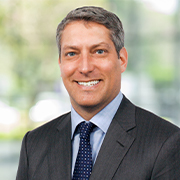Speaker 1:
Welcome to TD Cowen Insights, a space that brings leading thinkers together to share insights and ideas shaping the world around us. Join us as we converse with the top minds who are influencing our global sectors.
Phil Nadeau:
Hi, I am Phil Nadeau, a biotech analyst at TD Cowen, and we're here at TD Cowen's 45th Annual Healthcare Conference. I'm with Alexandra Hardy, the president and CEO of BioMarin, as well as Brian Mueller, the Executive Vice President and CFO. Alexander, could you give us a brief state of the company overview for BioMarin? What are its biggest strengths, biggest challenges, and what does BioMarin need to achieve to drive performance over the next year to two?
Alexander Hardy:
Thanks very much, Phil, and thanks for having us here. Great to talk to you. Yes, so I mean, I came to BioMarin just over 14 months ago to build an iconic and great biotech company. Everything that I saw from the outside is really real on the inside, and I think we've got all the fundamentals to be able to do that. So an iconic biotech company driven by innovation, growth and value commitment, those are the three pillars of our strategy. We've got all the ingredients to do that. We have a highly innovative R&D engine, we have great growth drivers with our enzyme therapies, which are producing sustained high levels of growth, and we have in VOXZOGO a drug which is approved for achondroplasia and had five subsequent indications all in the clinic.
Last year we gave long-term guidance of 27, $4 billion in revenue, a 40% margin by 2026 and increasing thereafter, and significant levels of cash flow generation of $1.25 billion in 2027. So this is a really exciting vision of innovation, growth and delivery of value creation to stakeholders. We were also very motivated, of course, by the difference we can make for patients. We're aiming in the next 10 years to be able to treat four times as many patients as we're currently reaching, and that's what motivates me and the team at BioMarin.
Phil Nadeau:
Should talk a bit more about the long-term product portfolio for BioMarin. What will that portfolio look like in 2030, in 2035? What's the contribution from the current products versus what you have in the pipeline?
Alexander Hardy:
Yeah, very much our long-term guidance is predominantly driven by what we've already got eyes on in terms of our current portfolio and our pipeline. In fact, the relative contribution of our pipeline to that is relatively small. I think that means for investors that they can be really quite confident. We have proof of concept for four out of the next five indications we're pursuing for [inaudible 00:02:57] and that's going to be very important for our growth. We're already in the clinic, as I mentioned, and with the data behind us we think those are strong potential future growth drivers. Then we have our enzyme therapies. We see no reason why these won't continue to grow strongly. We're targeting high single digit growth rates for that portfolio over the next 10 years. So these are going to be the key drivers. Then we've got our pipeline and we've got some important readouts this year.
We have our drug for Duchenne muscular dystrophy. We have proof of concept in the second half of this year showing the effect on dystrophin levels. We're very excited about that program. We have long-acting CNP where our target product profile that we're aiming for is superior efficacy as well as increased dosing intervals. We'll be showing the early PK data in healthy volunteers, hopefully indicating that we're achieving high and sustained levels of CNP. Then we have also the phase three readout of Palinzeq in adolescence this year. If we're successful with that, we'll file with the FDA and possibly get approval for that shortly thereafter.
Phil Nadeau:
Brian, Alexander referenced the long-term guidance. Can you talk about your confidence that BioMarin's current product portfolio and pipeline are sufficient to achieve that long-term growth? What are the risks? What has potential to drive upset?
Brian Mueller:
Yeah, thanks, Phil. Really excited about our long-term guidance. This is the first time that BioMarin has provided long-term guidance after a solid track record over the last several years of both revenue and profitability growth. So as Alexander noted, we are aiming for $4 billion in 2027. This is mostly coming from our approved inline products for skeletal conditions, which includes Vox Ogo. We're targeting a 25% or greater CAGR over this period. Contributing to your question about confidence to the $4 billion is mostly the chondroplasia indication. We are expecting to launch Vox Ogo in Hypochondroplasia 2027, but that would just be a partial year. Then Alexander touched on the high single digit anticipated growth from the enzyme therapies, which from a solid baseline of close to $2 billion of revenue now that really also gets us on track towards the $4 billion. Then beyond that $4 billion, we are targeting a midteen CAGR through 2034, and that's where we'll start to see over time both the additional indications for Vox Ogo hopefully come online, as well as launch some of these pipeline assets.
Phil Nadeau:
Alexander, what role will business development have in your long-term vision? What assets would be most complementary to BioMarin's current, which therapeutic areas and stages of development are most interest in? How aggressive does BioMarin feel it needs to be in finding external assets?
Alexander Hardy:
Last year when we defined the go forward strategy for BioMarin to be a leader in genetically defined conditions, we called out there's going to be a significant role for business development in delivering that strategy. We want to be open to external innovation as well as our own productive internal innovation efforts. So we see an opportunity for us to do deals that add to that pipeline that are all in genetically defined conditions. We'll do early stage partnerships, which is something we've always done. The new focus is actually on clinical stage assets. We're very excited about what we are seeing in people reaching out to us and the recognition of our capabilities as a leader in genetically defined conditions, our ability to develop, get approvals, manufacture, and very, very much so, specifically our commercial footprint. Just to highlight that for the audience, we have a presence in 80 countries, and you need that when you're in genetically defined conditions.
The prevalence of these diseases are often very much outside Europe and the United States. I'll give you an example for achondroplasia, only 10% of patients with achondroplasia in the United States. 68% of patients are outside the United States, Europe, Australia, Canada, and New Zealand. So to be a player and to be a leader in this space, you need that network and people are recognizing that footprint that we have. Absolutely business development we think can add to the guidance we've been talking about. It's not included, we see it as being incremental to the levels of growth that we're aiming for over the next 10 years, and we think it's an exciting opportunity to add to that innovation, add to our impact, and we think also contribute value to investors as well.
Phil Nadeau:
That's perfect. Thanks for coming to TD Cowen's 45th Annual Healthcare Conference and dropping by the Insights podcast.
Speaker 1:
Thanks for joining us. Stay tuned for the next episode of TD Cowen Insights.








